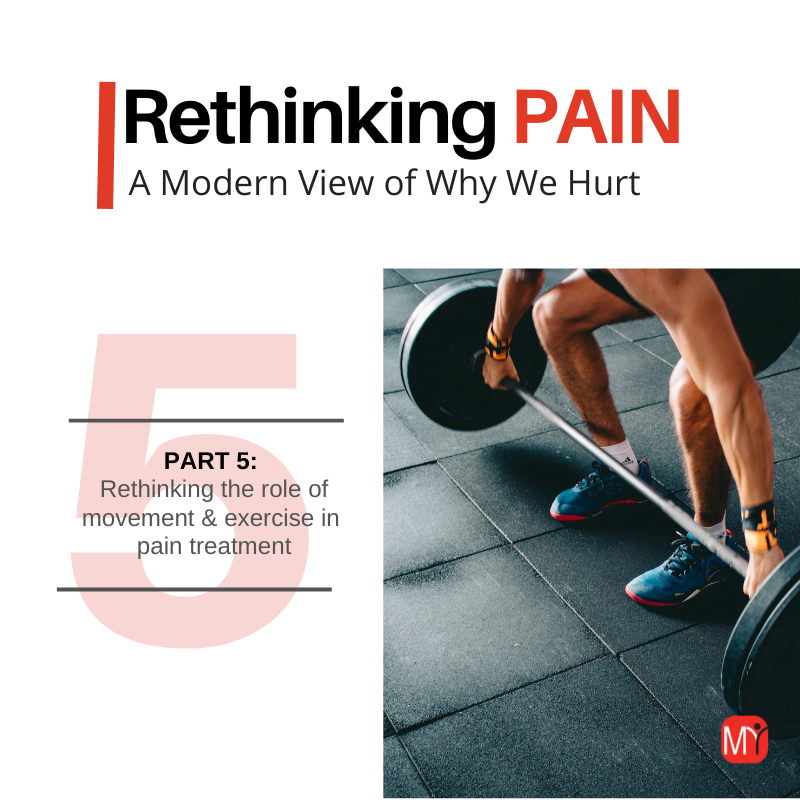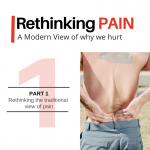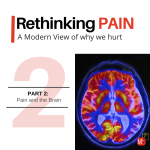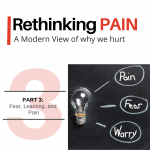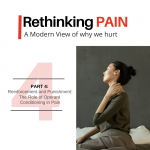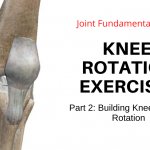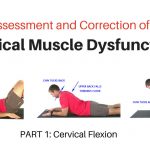PART 5: Re-Thinking A Movement Based Approach to Pain
We’ve been talking a lot about pain in this article series. And from our discussions so far hopefully one thing is clear…Pain is far more than a simple reflexive response to tissue damage or injury.
In fact, we now know pain is not a sensory input at all. Instead, modern science tells us pain should be viewed more as a perceptual output. As an experience that your brain generates when it decides pain would be helpful given your current situation.
This is all based on the fact that pain is meant to be protective. It is a tool your brain can call upon to modify your behavior to help protect you from a potential threat. (See Part 2)
Think of it this way…
Your brain is continually taking in information from the internal state of your body as well as the world around you. It uses this information to run simulations of available actions, responses, and potential outcomes. But when your brain encounters a situation that it perceives as potentially harmful it can call upon the pain system as a means to change how you do something or avoid doing something all together. Here we see the protective value of pain, as a modifier of behavior.
This interpretation by your brain is based on several factors, including real-time information coming in from your body and surrounding environment, as well as memories and past experiences with similar situations. Mindset and beliefs about pain are also a big player here. This is where pain education comes in.
Explain Pain
We know pain is not necessarily about tissue damage and injury. It is often about a hyper-sensitive and over-active pain system. And worry, catastrophizing, and avoidance of movement for fear of further damage can add fuel to an already sensitized pain system. This has been the entire focus of this article series.
But this is not always obvious to our patients
And beliefs that pain is always consistent with damage can be a significant barrier to movement and activity. This can detrimental to recovery.
This is where we see the value of pain education. Helping patients to understand the meaning and value of pain, specifically that hurt does not necessarily mean harm, and that pain is often more about a sensitive pain system can be a powerful part of the treatment process. This messaging and awareness can help turn down the alarm system and open the door for movement based interventions.
But education is not enough
But as important as pain education can be, it’s not enough. However, it can be a powerful tool to utilize in conjunction with other therapies.
In Part 3 of this article series we made a connection between pain and phobias. Remember Little Albert? This connection provides a nice framework to illustrate the connection between education and action here.
A phobia is an irrational fear that is out of proportion to the danger posed by the presented stimulus. The realization that the stimulus does not pose a serious risk does not eliminate the exaggerated response. But it can be leveraged and combined with other interventions to help eliminate, or at least reduce and control, the maladaptive response.
Think of someone who suffers from a fear of snakes. Here encountering a benign snake in their garden may create a release of chemicals to elevate respiration and heart rate and shunt quickly shunt blood to their muscles. While this sympathetic flight-or-flight response may be perfectly appropriate if they came across a cobra in the jungle, it is clearly out of proportion to the garden snake.
But simply telling this person that the garden snake is not dangerous is unlikely to eliminate this exaggerated response. But this knowledge can be paired with gradual exposure to the stimulus to help reduce and/or control the response.
Exposure Therapy
Traditionally, exposure therapy is a technique used by therapists to help people overcome unwarranted fears by gradually exposing them to threatening stimuli, but in an environment that is known to be safe. The idea here is that exposing people little by little to stimuli that cause distress in a safe environment helps to break the association between the stimulus and the conditioned response. It helps the individual to learn to feel safer in a given situation.
The key here is the exposure is gradual. In other words, it starts off small and progresses over time.
We wouldn’t just tell someone with a snake phobia that their fears are irrational and throw them a python. The process would start more subtlely. Like maybe with a rubber toy snake or even a picture of a snake. Then as they start to be less anxious and fearful the brain starts to turn down the alarm system and recalibrate the smoke detector. The exposure can then be progressed.
The toy snake could be followed by a video of a snake. Then maybe some virtual reality goggles to make the experience a little more life-like, then perhaps a real snake in a cage.
Exposure therapy has been used to help with things like phobias, anxiety disorders, or PTSD. But these techniques also have a role in the treatment of pain.
Take back pain for example. Here it is common for movement of the spine to cause pain. Patients often associate these symptoms with the potential for further damage or injury to the discs and joints of their back. This can lead to fear or avoidance of activities such as bending, walking, lifting, or a regular exercise routine.
Graded expose can be helpful here.
Graded-Exposure For Patients in Pain
For lower-back pain patients this may start with some basic movements to create motion through the lumbar spine. Pelvic tilts from a supine or quadruped posture are a great starting point here. These are pretty safe exercises from a load/tissue perspective, but this may not be obvious to the patient as these movements often re-create symptoms.
Here we see an opportunity to re-frame the meaning of pain. As these are non-weight bearing exercises the physical stress on the spine is relatively low. So symptoms here are more related to sensitivity as opposed to tissue damage.
Using an ankle sprain as a frame of reference here can be helpful. Performing open-chain AROM exercises for an injured ankle may create some symptoms, but because the stress is low we know the tissue is safe. Symptoms here are a result of tissue sensitivity and the accumulation of chemical/inflammatory mediators as opposed to further ripping or tearing of the ankle ligaments.
As the patient continues the exercises the pain response typically diminishes. This de-sensitization response may be partially due to tissue changes, but cognitive-emotional factors are at play as well. Just like the brain is able to turn down the alarm system with exposure to the rubber snake, the brain starts to “trust” that they can move the spine without penalty. And just as with the snake phobia, as tolerance improves exercises can be progressed to increase tissue stress and more closely resemble the feared or offending activity. This may include transitioning the pelvic tilts to an upright position, then to a hip hinge type exercises, then to deadlifts or other bending type exercises.
But what about how the patient is moving. Where does that fit in?
But Do We Need to Move the Right Way?
Faulty movement patters are often thought to create pain and injury. But as discussed in Part 1, research has failed to find consistent support in this belief. Yet patients consistently get better with exercise interventions designed to correct these “faulty” movement patterns.
But these improvements occur without coinciding changes in movement. So the exercises help. But it seems not for the reason we thought they would.
Given our modern understanding of pain it is possible that the real benefit of these interventions (at lease with respect to pain) again lies in the brain as opposed to the tissue.
So with respect to pain, maybe the primary benefit of these exercise based interventions is not so much in getting the person in pain to move the correct way, but just to move more. Here it is not so much we need to move the right way to get rid pain pain, but to move despite the pain. Maybe these corrective exercises are another from of graded exposure.
Again this goes back to the CNS response. It helps teach the brain it is safe to move so it can turn down the alarm. It gets back to the idea idea of trust and safely. Does your brain believe it can safely accomplish a given movement task?

